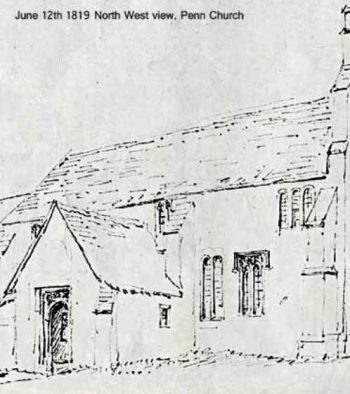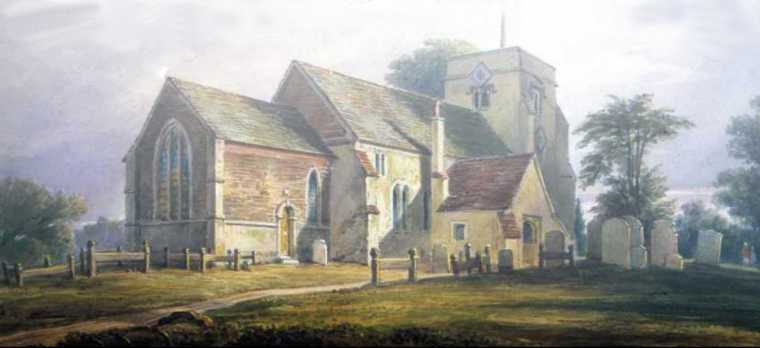It is a full year since my last article about the arrival in Penn of the Revd John Grainger, and the many changes which he made to the interior of the church, inspired by the Oxford Movement with its advocacy of a higher degree of ceremony in worship to bring it nearer to that of the Roman Catholic Church. This also required ‘improvements’ to the fabric of the church, which in effect meant the removal of any feature which was not in accord with the ideal of the architecture of the medieval Decorated period (c.1280-1380).
Thus, as I noted before, two galleries were removed, a two-storey south porch was taken down and the three-decker pulpit was removed. In addition, an altar, carrying a cross and candlesticks, was restored after more than three centuries, although the altar was of wood rather than stone as it would have been before the Reformation.
The eagle lectern, another reversion to medieval tradition, may have been installed around this time and the black and red Victorian tiles laid on all the floors. The natural colour of the oak of the roof timbers still survives in the tower, but elsewhere they were stained black, probably at this stage. The very fine, early 18th century pulpit, oak with marquetry, arrived from the Curzon chapel in Mayfair when it was closed in 1899.
The photograph is of a water-colour of the exterior of Penn Church by Henry Zeigler (1793-1874). He was a leading painter in his day and taught Queen Adelaide, the wife of William IV, to whom the 1st Earl Howe was Lord Chamberlain. The painting shows the church as it was in c.1860, just before the first significant changes were made to it since the 1730s, and was presumably commissioned for that reason. The east window was still the ‘Road to Emmaus’, installed in the 1730s and set in a brick wall. Both were soon to be taken down and replaced with a more suitably Gothic window set in the knapped black flint fashionable at the time.
 The two lancet windows in the north wall were presumably regarded as too early and too primitive, and so the single lancet was blocked in (to be rediscovered in 1952) and the double lancet was replaced by a copy of the late 15th century clerestory (higher level) window on the other side of the porch. The three-light brick window in the clerestory the other side of the porch was rebuilt as a copy of the other two original 15th century clerestory windows and the lower brick window was filled in. All these changes were aimed at producing a symmetrical all-Gothic appearance to the church as you approach from the main road.
The two lancet windows in the north wall were presumably regarded as too early and too primitive, and so the single lancet was blocked in (to be rediscovered in 1952) and the double lancet was replaced by a copy of the late 15th century clerestory (higher level) window on the other side of the porch. The three-light brick window in the clerestory the other side of the porch was rebuilt as a copy of the other two original 15th century clerestory windows and the lower brick window was filled in. All these changes were aimed at producing a symmetrical all-Gothic appearance to the church as you approach from the main road.
On the far side of the church, Two semi-dormer windows were put in the south isle, presumably replacing either worn out original 14th century windows or unacceptable later replacements.
The first Earl Howe paid for this work and one wonders whether his money was well spent. Fortunately, our mainly 14th-century aisle and tower were seen as correct, so what happened in Penn was only a modest example of Victorian restoration, when well-intentioned, but over-zealous concerns to sweep away the past often carried away much of value that contributed to the atmosphere of the church. In other local churches, such as Beaconsfield and Amersham, very little is visible of the former medieval church.
Miles Green, Penn Parish Newsletter No.53, November 2018

